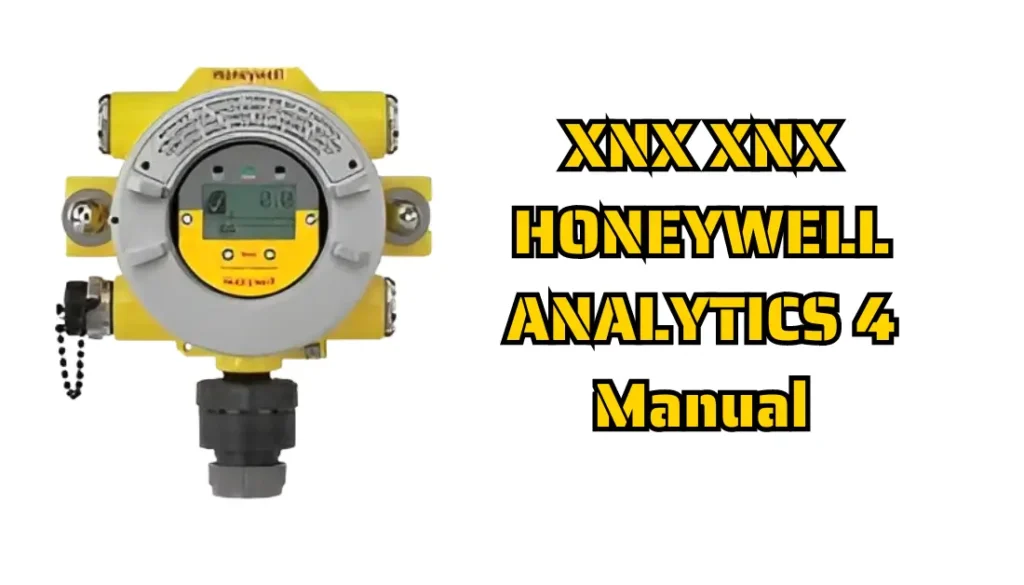Knowing and understanding technical manuals thoroughly are very important for safely and effectively while using complex instruments like XNX XNX Honeywell Analytics 4 X Universal Gas Detector. These manuals provide extensive information on how to install, connect wires, set up basic configurations, conduct tests, troubleshoot issues, and perform general maintenance for the gas detector. Ignoring these guidelines can lead to incorrect readings, early malfunctions, and inappropriate responses, putting both infrastructure and people at risk.
In this article, we will look into the essential knowledge provided in the XNX XNX Honeywell Analytics 4 x manual, while also discussing real-life consequences that can occur if the instructions are not followed properly.
Why is the XNX XNX Honeywell Analytics 4 X Manual Necessary To Understand?
The advanced capabilities integrated into the XNX make the units highly versatile for industrial settings but also introduce complexity requiring informed handling. Thankfully, Honeywell Analytics provides extensive technical guidance to educate personnel on ideal utilization.
Critical Importance of Understanding the Manuals
Missing or disregarding key instructions can severely hinder analyzer performance or produce dangerous situations. Conversely, closely following operational recommendations ensures:
- Accurate and reliable gas reading data
- Quick fault diagnosis and troubleshooting
- Avoidance of unnecessary alarms or shutdowns from misconfigurations

In short, the manuals allow personnel to reap the most from the capital investment while delivering continuously high-quality measurements the facilities can trust.
Key Insights Covered Within the XNX XNX Honeywell Analytics 4 X Manual
The in-depth XNX 4X user manual thoroughly covers critical aspects from initial installation to general maintenance. Section highlights include:
Product Overviews
The Product Overviews section of the manual provides comprehensive descriptions of the various base analyzer models, including dimensions, materials, protection ratings, and power options. It also details the compatible sensor cartridges for detecting different gases along with their detection ranges and applications.
The overviews cover accessory boards that enable advanced functions like HART, relays, and FieldBus communication.
Installation
The Installation guidance gives diagrams indicating optimal mounting locations and orientations to enable proper air intake. It also provides wiring schematics for connections to power, outputs, and communication protocols.
Additional installation insights cover recommendations for wire gauges, distances, conduit openings, and sealing to maintain protection ratings.
Configuration
The Configuration section delivers instructions for using the provided software to locally and remotely access the transmitter’s data and modify detection parameters.
Users can find details on establishing alarm limits, delays, and logging based on sensor types and facility risk tolerances. It also explains the advanced diagnostic screens and settings related to troubleshooting.
Calibration and Bump Testing
The Calibration and Bump Testing content provides definitions and the importance of field calibrations and bump testing to ensure accuracy. It gives step-by-step zero and span calibration procedures by sensor type along with bump test gases, frequency, delays, and sensor impacts.
Specifications
The Specifications section delivers comprehensive performance data including measurement ranges, temperature limits, precision metrics, and alarm classifications for the sensors. It provides selection guidelines to match sensors to applications appropriately.
Maintenance and Troubleshooting
The Maintenance and Troubleshooting insights cover both scheduled preventative maintenance and detailed fault diagnostics with corrective actions. It suggests cycles for activities like filter cleanings and describes indicators of issues like moisture or clogged inlets.
It also maps common warnings and error codes to wiring defects, calibration failures, expired sensors, and environmental interferents.
Certification
The Certification section documents intrinsic safety ratings and other approvals to ensure procurement teams match site hazardous location requirements.
Warranty Information
The Warranty Information outlines coverage terms for manufacturer defects and assists in diagnosing flaws versus improper handling or damage. It clarifies replaced consumable responsibilities over the equipment lifecycle.
Real-World Impacts of Improper XNX XNX Honeywell Analytics 4 X Manual
Failure to follow the Honeywell best practice recommendations detailed in the literature can produce negative consequences stretching from minor nuisances to catastrophic safety failures resulting in injury or environmental disasters.
Safety and Operational Risk Examples
Several examples of scenarios produced by improper adherence to equipment positioning, calibration/testing, and maintenance include:
| Issue | Risk |
| Inaccurate or erratic readings | False alarms and unnecessary production shutdowns |
| Missed legitimate gas release events | Personnel exposure or equipment damage |
| Faulty sensor replacements | Loss of configuration causing monitoring gaps |
| Disregarded moisture filters | Sensor corrosion shortening operational lifetime |
| Overexposure during calibration | Accelerated sensor aging and instability |
| Improper spark protection | Explosions from gas leaks |
- Technician errors are the main root cause of industrial accidents
- Comprehensive testing histories provide legal protection after incidents
- The meticulous manual application prevents unnecessary safety risks and business disruptions
Download XNX XNX Honeywell Analytics Manual in PDF
Frequently Asked Questions
Final Words
The XNX XNX Honeywell Analytics 4 X 5 Manual helps improve installations and maintenance, ensuring the gas detector works well. Following information and instructions closely improves monitoring accuracy, ensuring facilities get reliable data for safety. In short, this manual offers essential guidance for top-notch safety and environmental control.